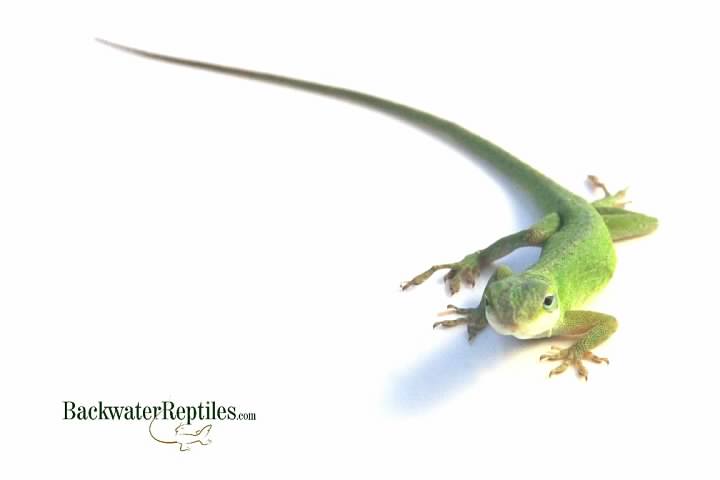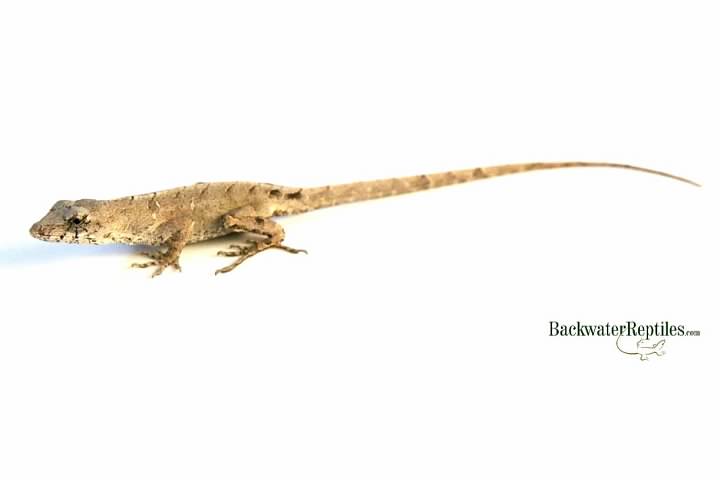Lizards can make very rewarding pets for children, even though they might not be what most parents would consider a “traditional” pet. They actually require far less maintenance than a cat or dog and most can be trained to be extremely social and friendly.
So, if you’re considering purchasing a pet lizard for your child or even as a classroom pet, check out our list below to see our top four lizards for kids.
The best lizards for children
1. Bearded Dragon (Pogona vitticeps)
Bearded dragons top our list of the best pet lizards for kids because they’re very gentle, docile, and extremely easy to care for in captivity. They enjoy being out of their enclosure and receiving attention from their owners and are probably one of the more interactive lizard species that we have ever kept.
Beardies, as they are more commonly known, begin life fairly small. If you purchase a hatchling, your little lizard should be around four or five inches in length. Beardies are piggy lizards and will pretty much never refuse food, so be prepared for your beardie to grow…and grow fast!
Even though you can keep a hatchling comfortably in a ten gallon tank for a few months, it will quickly grow into needing an enclosure that is at least 75 gallons as a full-grown bearded dragon can be about two feet in length.

Bearded dragons are omnivorous, but hatchlings will be more inclined to eat insects over vegetable matter. Their favorite tends to be crickets, mealworms, and waxworms. We recommend placing fresh greens such as mustard greens and collards in their enclosure daily and feeding invertebrates daily as well.
If you’re interested in a healthy, amusing pet bearded dragon, Backwater Reptiles has many different morphs to choose from, and they’re all captive bred and thriving.
2. Leopard Gecko (Eublepharis macularius)
If you’re in the market for a cute lizard with extraordinarily simple care requirements, then a leopard gecko just might be a good choice for your child.
Leopard geckos stay relatively small. A full-grown, large leopard gecko will reach ten inches long, but most will average around eight inches in length. They are available in many interesting color morphs and patterns, so this makes them very attractive to many hobbyists.

You’ll be hard-pressed to make a leopard gecko bite. They’re extremely good-natured little lizards. In fact, we love recommending them to children or first-time lizard owners because they always appear to be smiling.
Your leopard gecko will eat insects such as crickets, mealworms, and reptiworms. We like to give ours wax worms as treats, but only occasionally.
Check out our extensive selection of leopard geckos for sale ranging from hatchlings to mature adults. They’re perhaps the most popular pet lizard in the world.
3. Blue Tongue Skink (Tiliqua sp.)
We wouldn’t necessarily recommend a blue tongue skink for a young child such as a toddler, but a blue tongue would be a perfect pet lizard for a teenager or even pre-teen.
Blue tongues require a slightly more varied diet and a small percentage of specimens can be nippy if they’re not properly trained, so we think that unless you’re willing to invest the time to train and feed the lizard yourself, you may want to steer clear of choosing a blue tongue for your very young child. We’ve never had one attempt to bite us–ever–but if it did happen it’d be a little more painful than a bite from a small lizard.
Due to their giant blue-colored tongues, blue tongue skinks are commonly referred to as “Blueys” amongst reptile enthusiasts. If you’re lucky, you’ll catch glimpses of your bluey’s tongue when it eats veggies like kale, spinach, and collards combined with proteins such as mealworms, canned meat, or boiled chicken.
We know we already mentioned it, but blue tongues do have more complex dietary requirements than the other lizards on our list. Feeding them is not as simple as dropping a few insects in their cage or placing “skink pellets” into a dish.

Blueys will not need a lot of accessories in their enclosure. They have short, stubby, little legs, which means they’re not climbers. All they really need is a water dish, clean substrate that allows for burrowing, and some hiding places.
If you’re ready to take on a pet blue tongue skink, we have healthy babies and adults available. They’re one of the world’s most popular lizards.
4. Green Anole (Anolis carolinensis) or Brown Anole (Anolis sagrei)
Anoles have always been great starter lizards for kids. In fact, many of us experienced herp hobbyists started out keeping pet anoles when we were a child, so we recommend them from first-hand experience.

Both green and brown anoles have very similar care requirements and eat the same types of food. In fact, in the wild, they share habitat and compete for space and food. We’d recommend either color – we say let your kid(s) pick which species they want.
Anoles are very small pet lizards which means that the space they require for a habitat is smaller than any of the other pet lizards on our list. However, anoles are prone to flightiness and don’t really enjoy being handled. So, if your child wants a lizard that they can hold and pet, we recommend going with a hardier lizard from this list.

Green and brown anoles are both extremely affordable pet lizards, so if you’re on a budget, an anole just might be the best bet for you and your family.
Backwater Reptiles sells both species of anole, plus a few other species too!
Lizards for Kids – Conclusion
There are tons of great lizards available in pet stores and from breeders that make excellent pets. However, we highly recommend any of the four lizards listed above if you are specifically in the market for your child’s first pet lizard.
